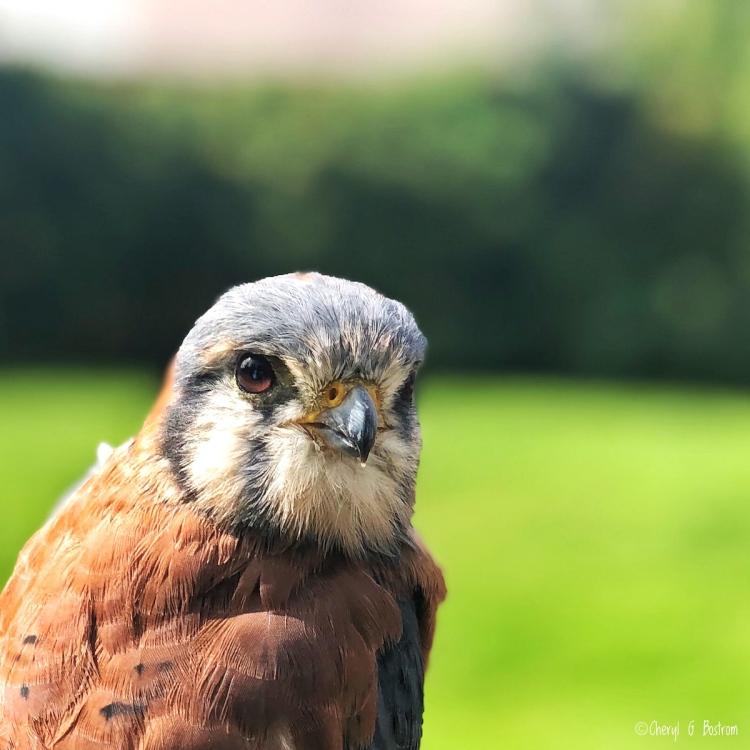Hello, Everett.

They believe a car struck him—back in 2008. He was rescued and rehabbed, but lost use of a wing, so this elderly American kestrel now lives at Washington State University’s Raptor Club.


Note his speckled breast and steel grey back feathers—distinctive to the male kestrel.
 Before he was injured, nose bones called nasal tubercles slowed airflow to help him breathe during high-speed stoops. The black malar streaks below his eyes cut glare during daytime hunts (copied by sports teams playing bright day games).
Before he was injured, nose bones called nasal tubercles slowed airflow to help him breathe during high-speed stoops. The black malar streaks below his eyes cut glare during daytime hunts (copied by sports teams playing bright day games).
And then there’s his tomial tooth—a.k.a. “falcon tooth”—a wedge and notch combo on his upper and lower beaks that functions like tin snips on the spine of his next mouse meal.

So perfectly equipped. I wonder if he remembers.
“And God is able to bless you abundantly, so that in all things at all times, having all that you need, you will abound in every good work.”
—2 Corinthians 9:8
https://www.vetmed.wsu.edu/outreach/raptor-club/resident-birds/everett
